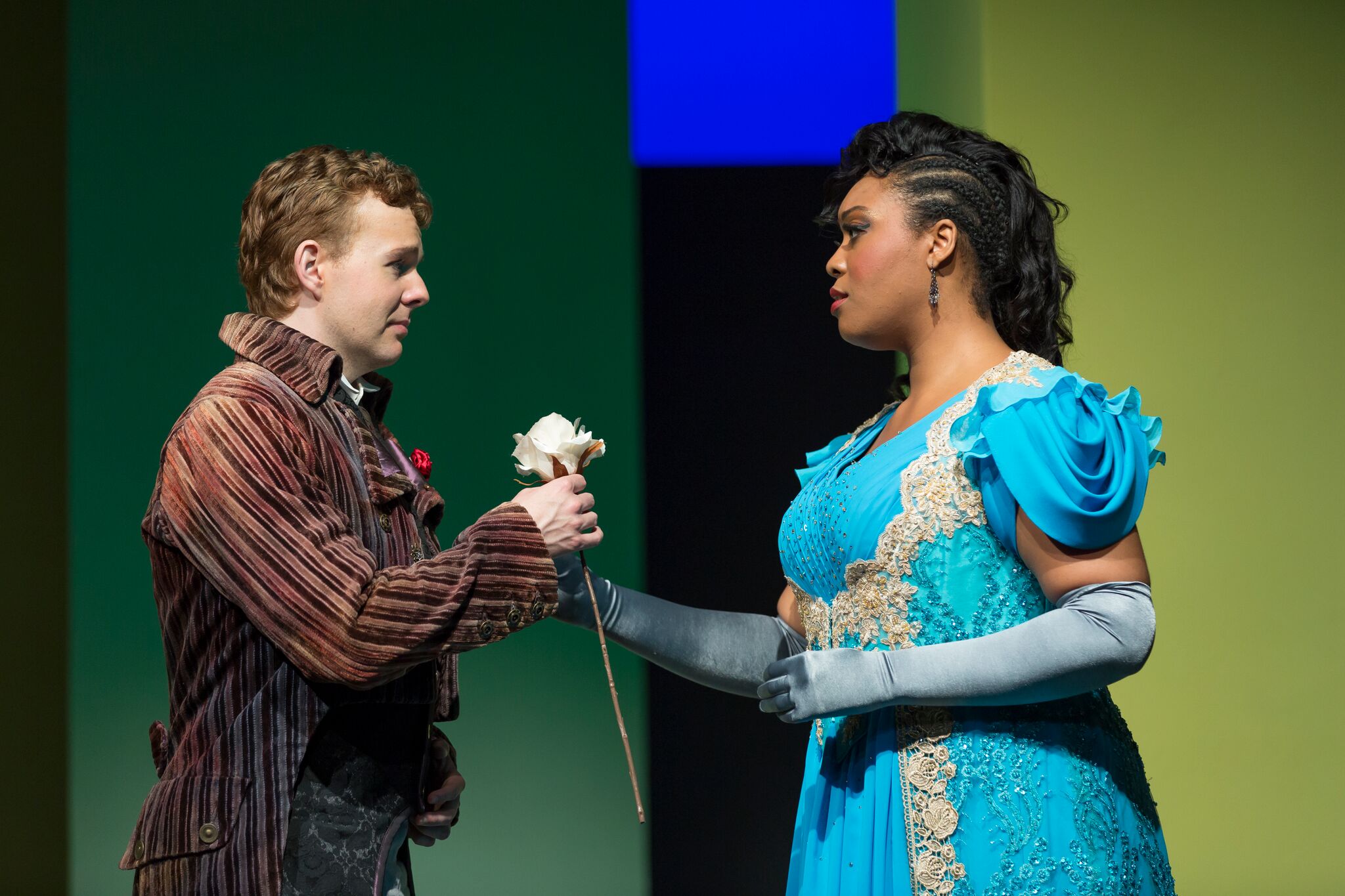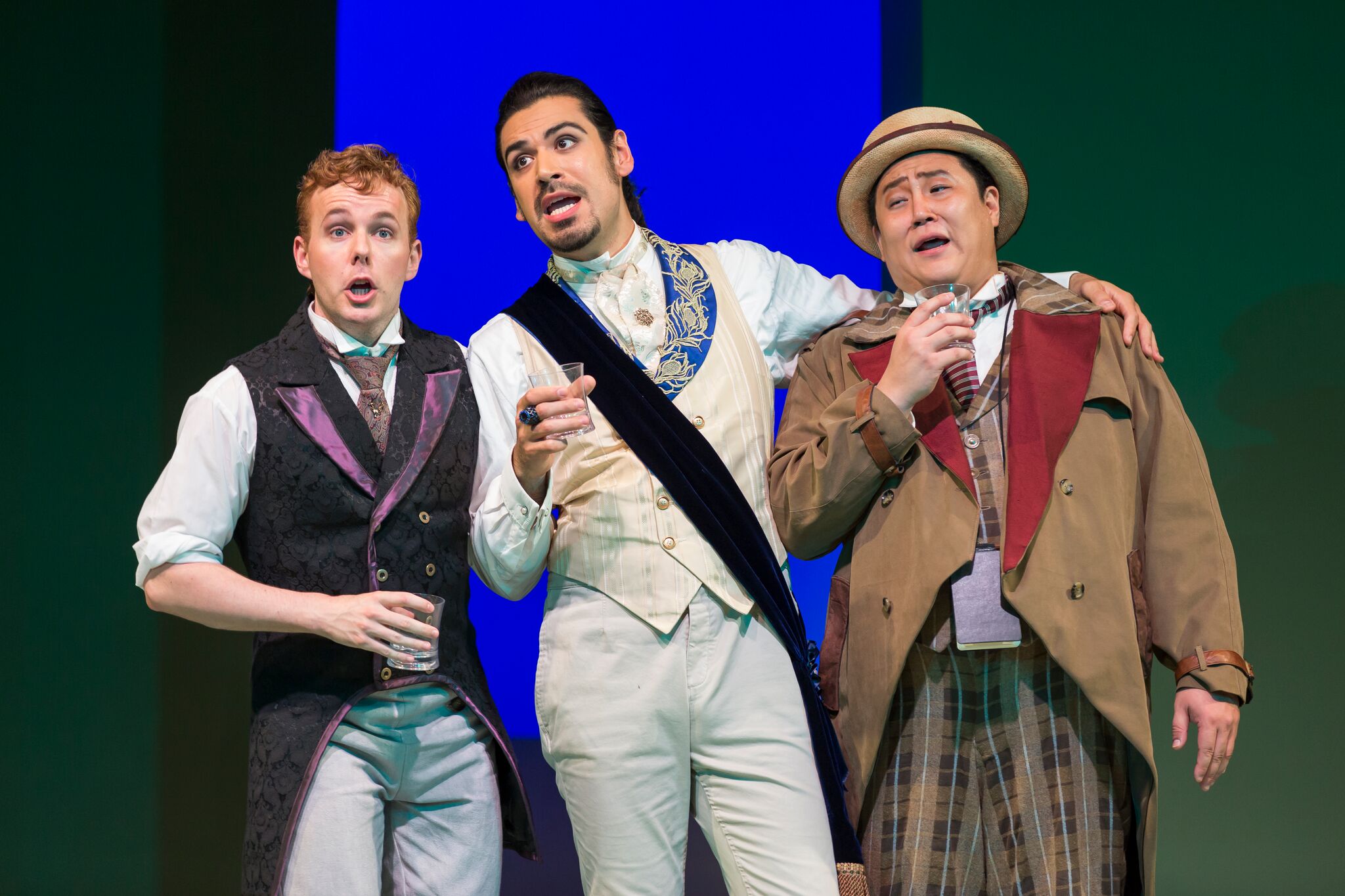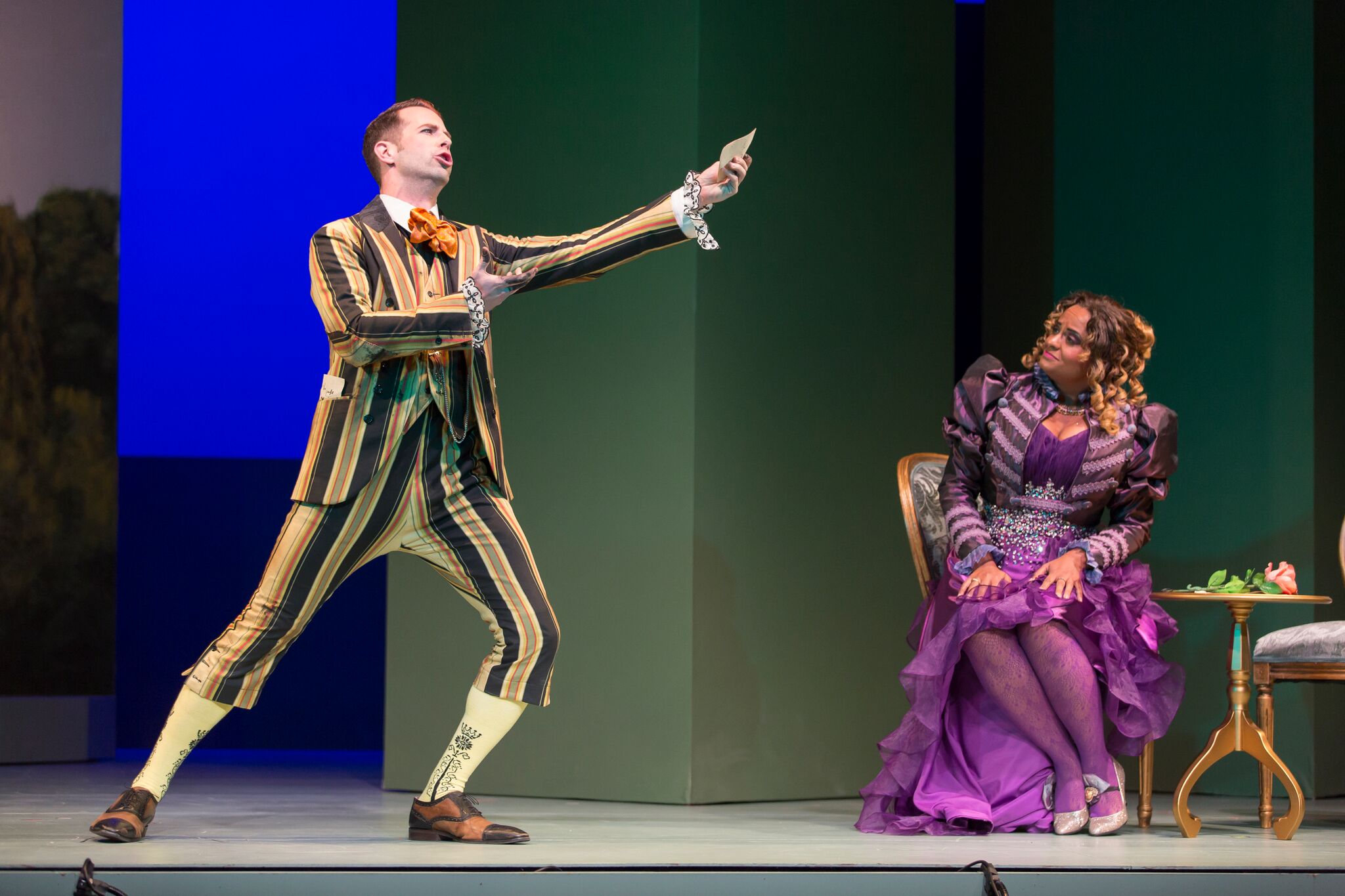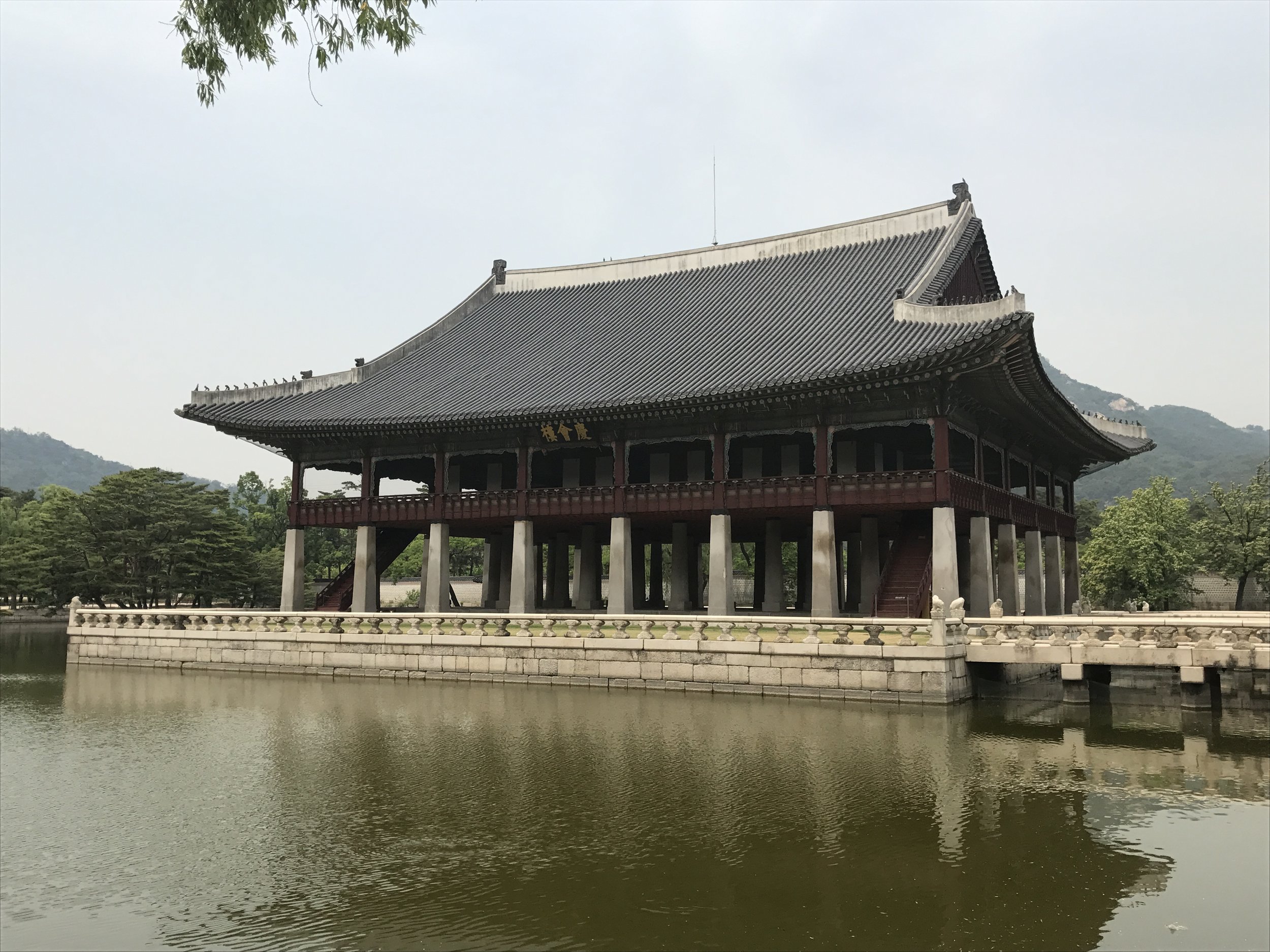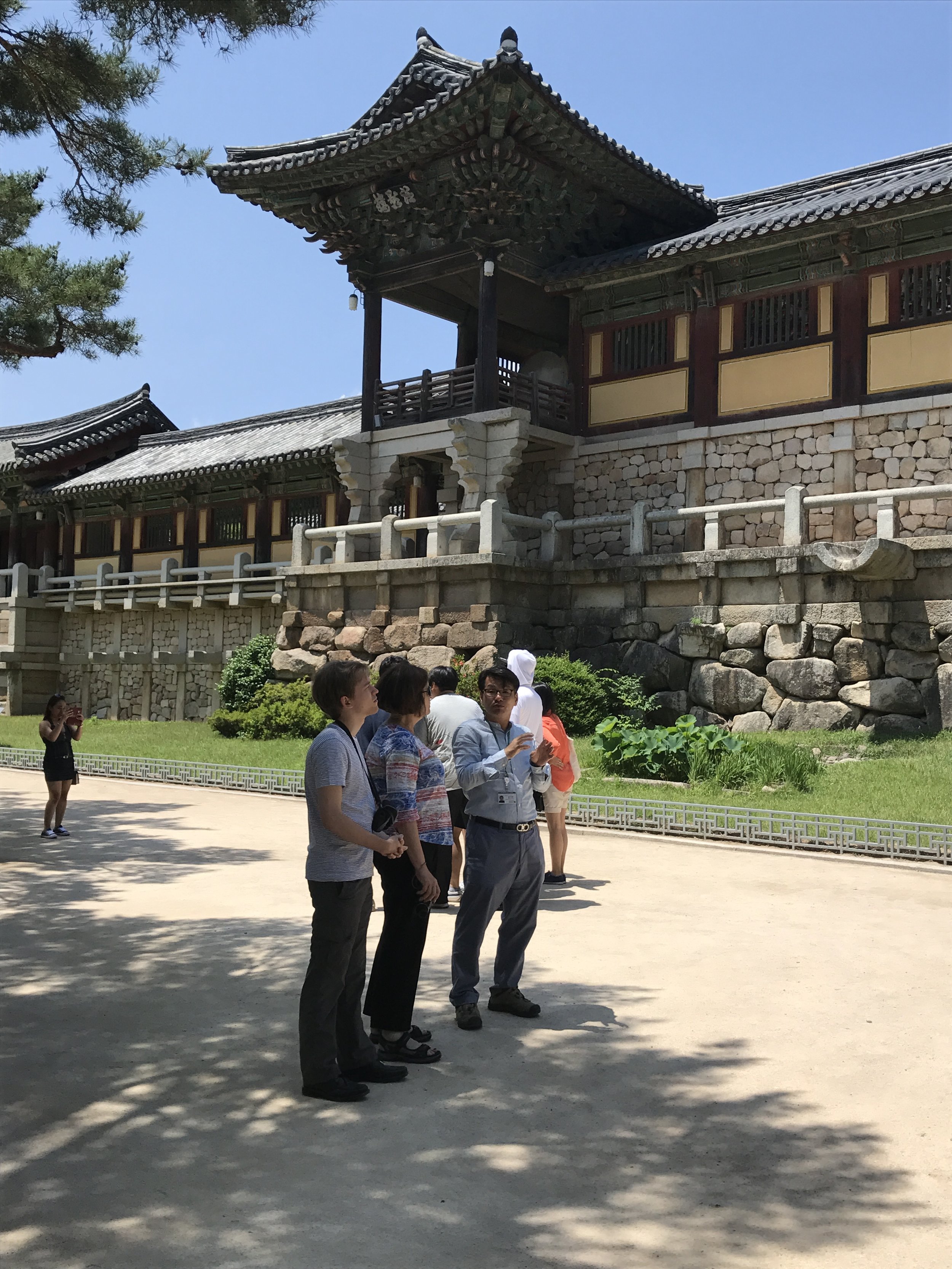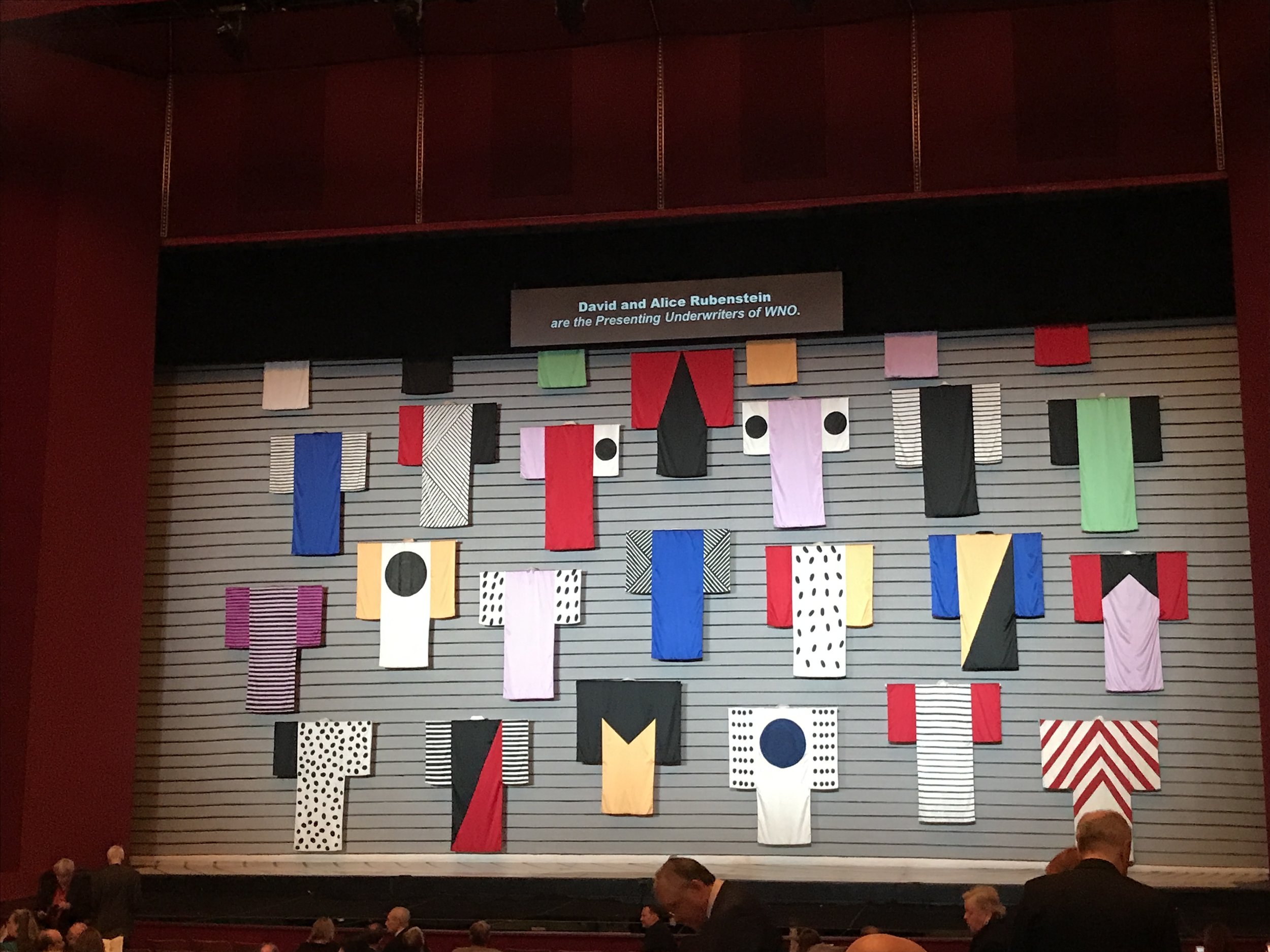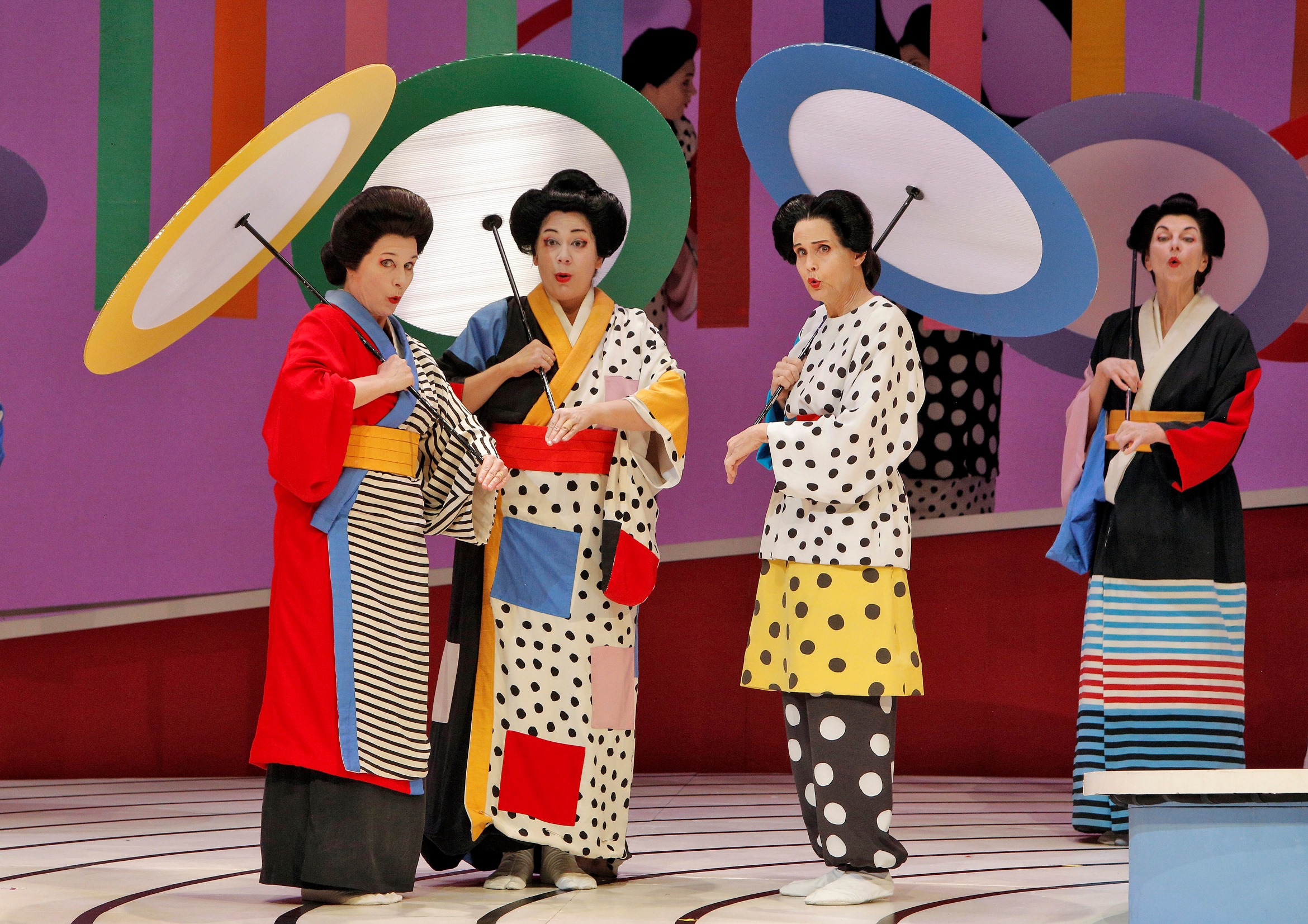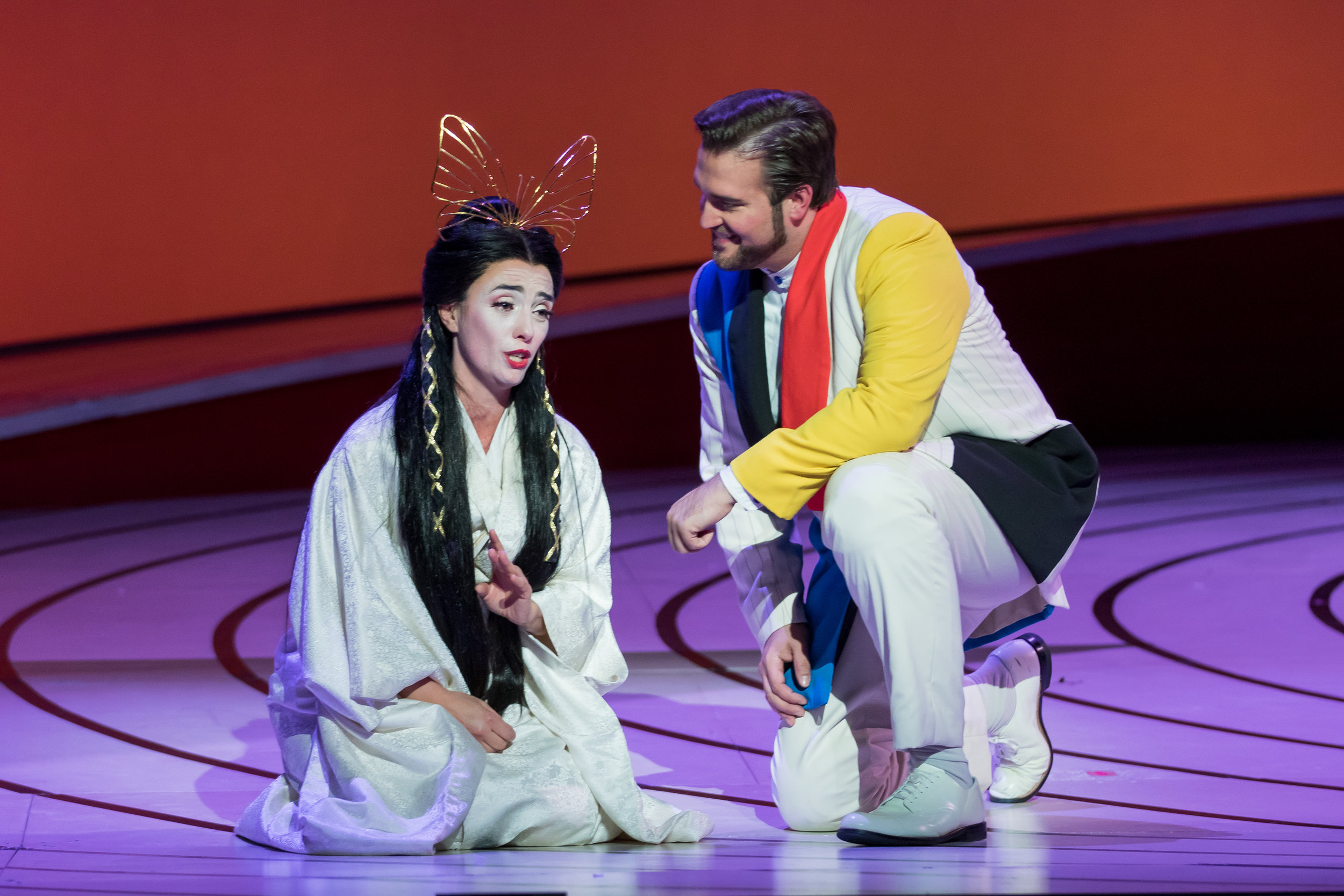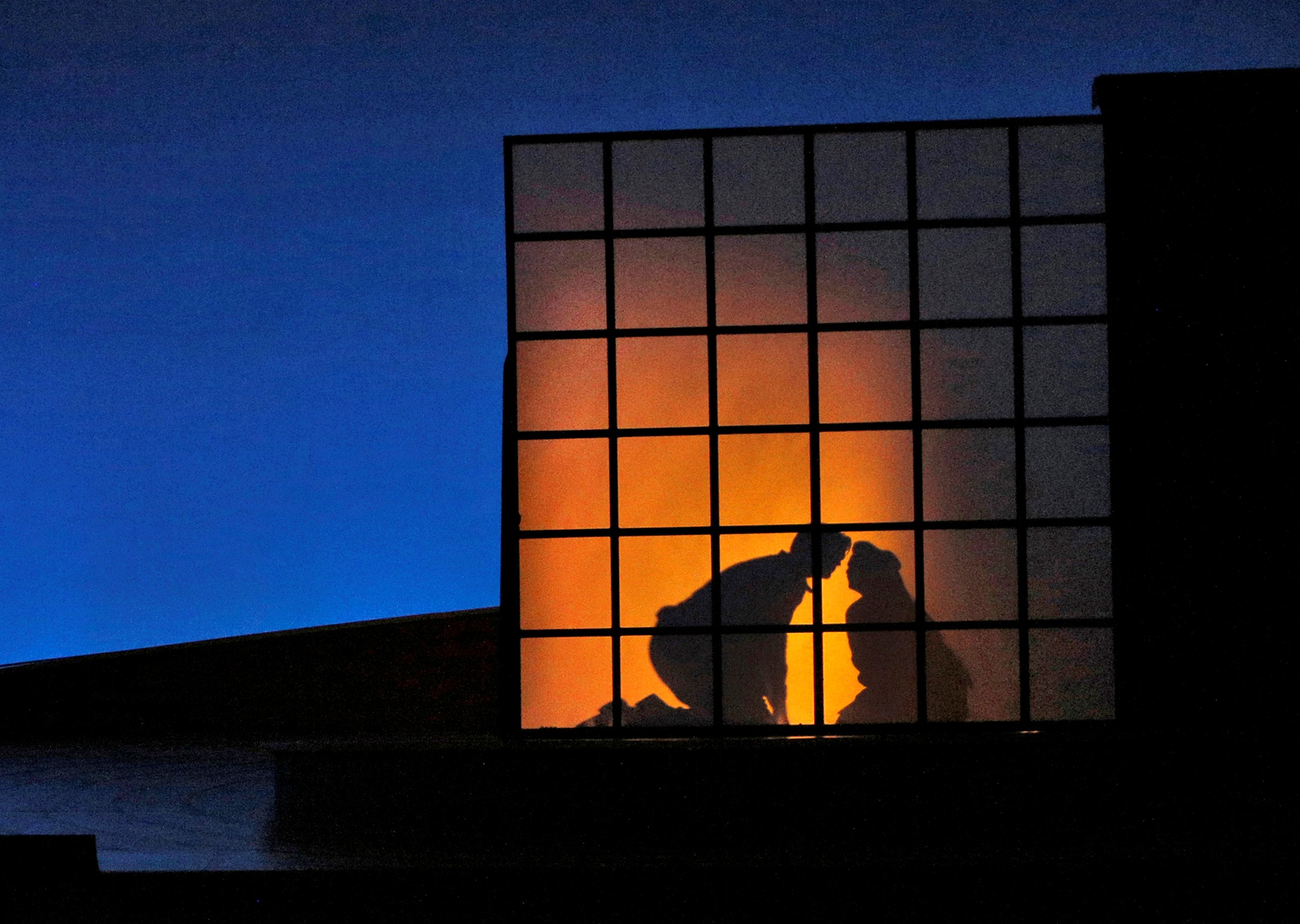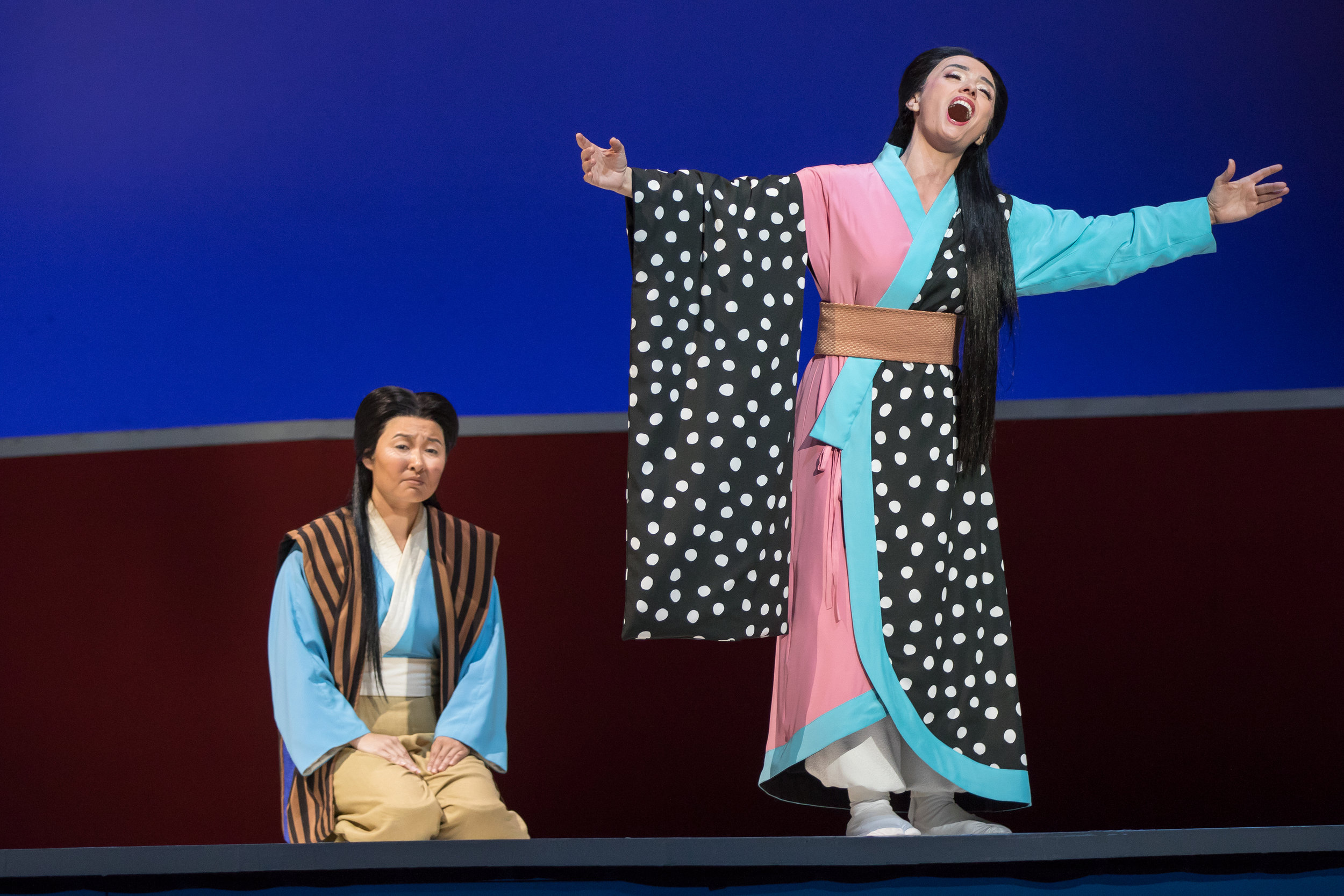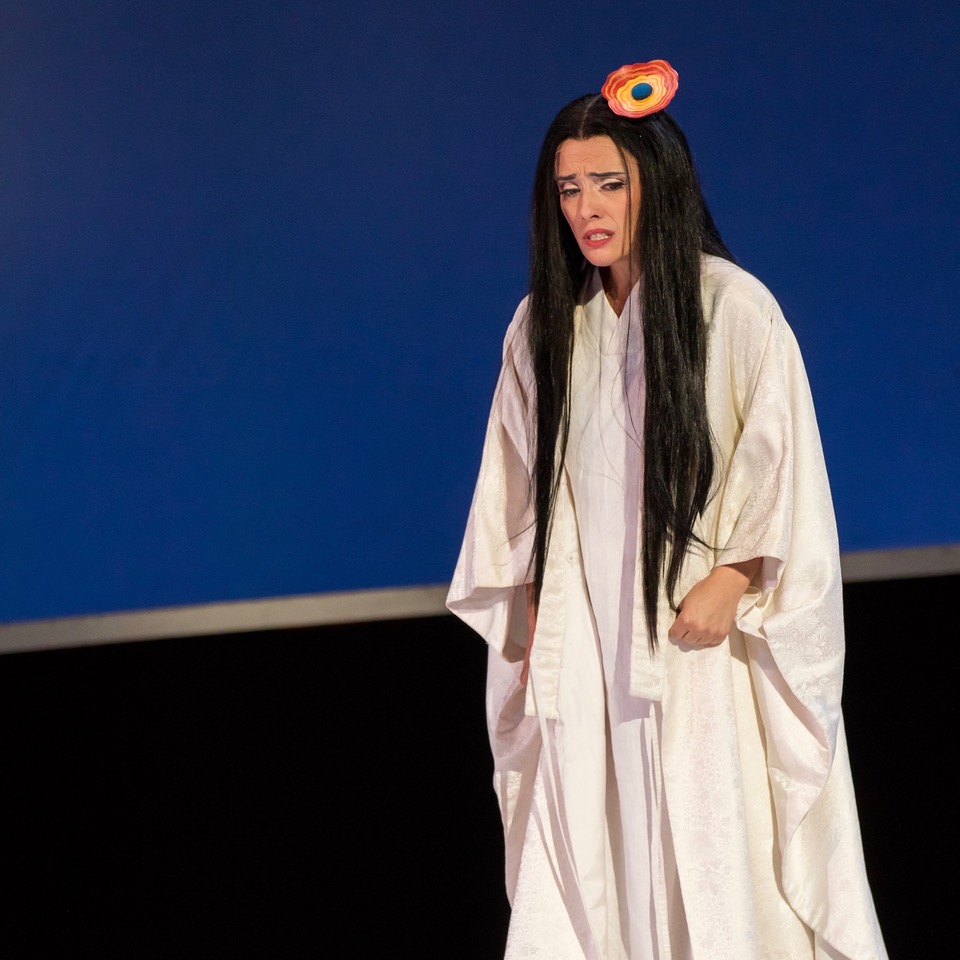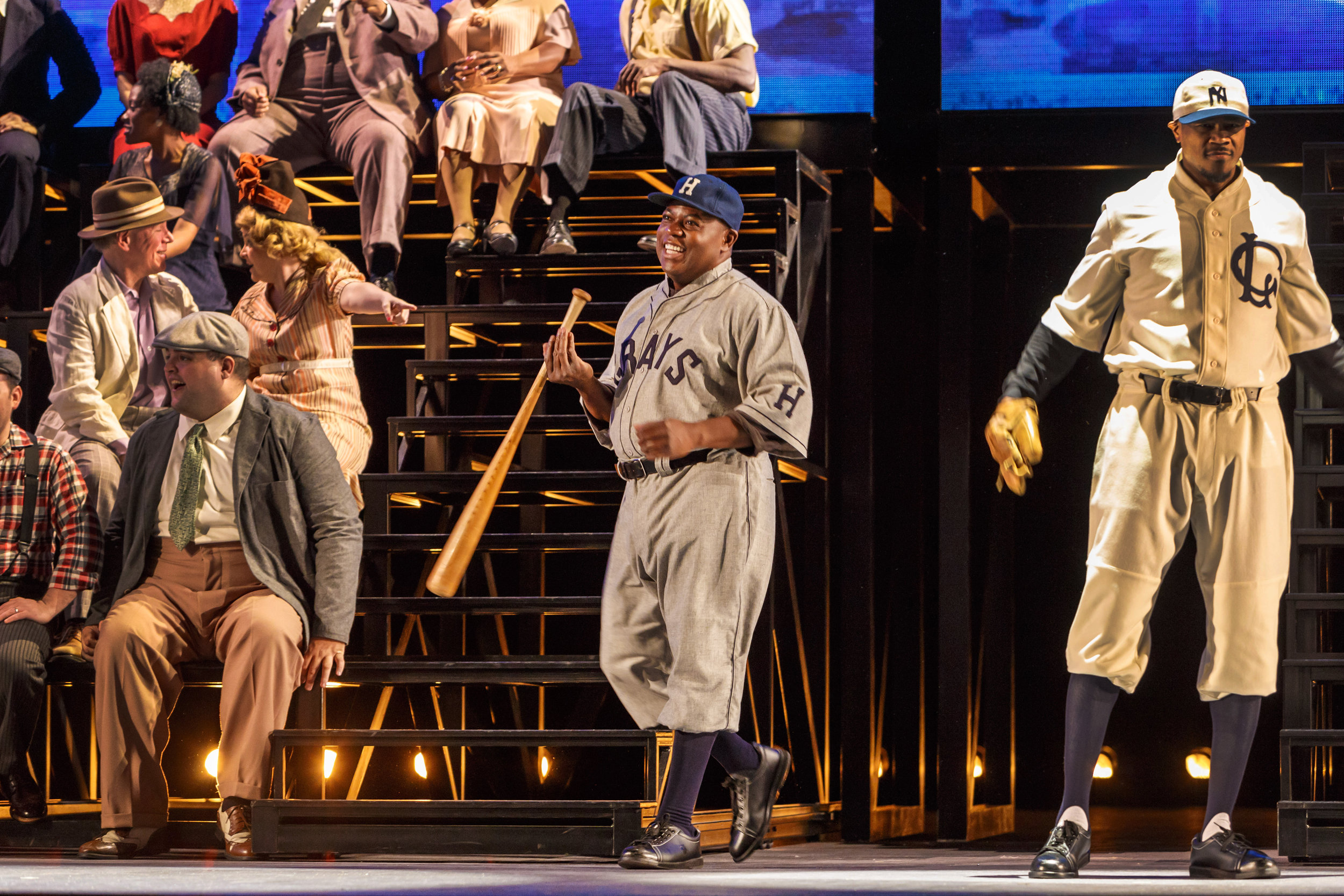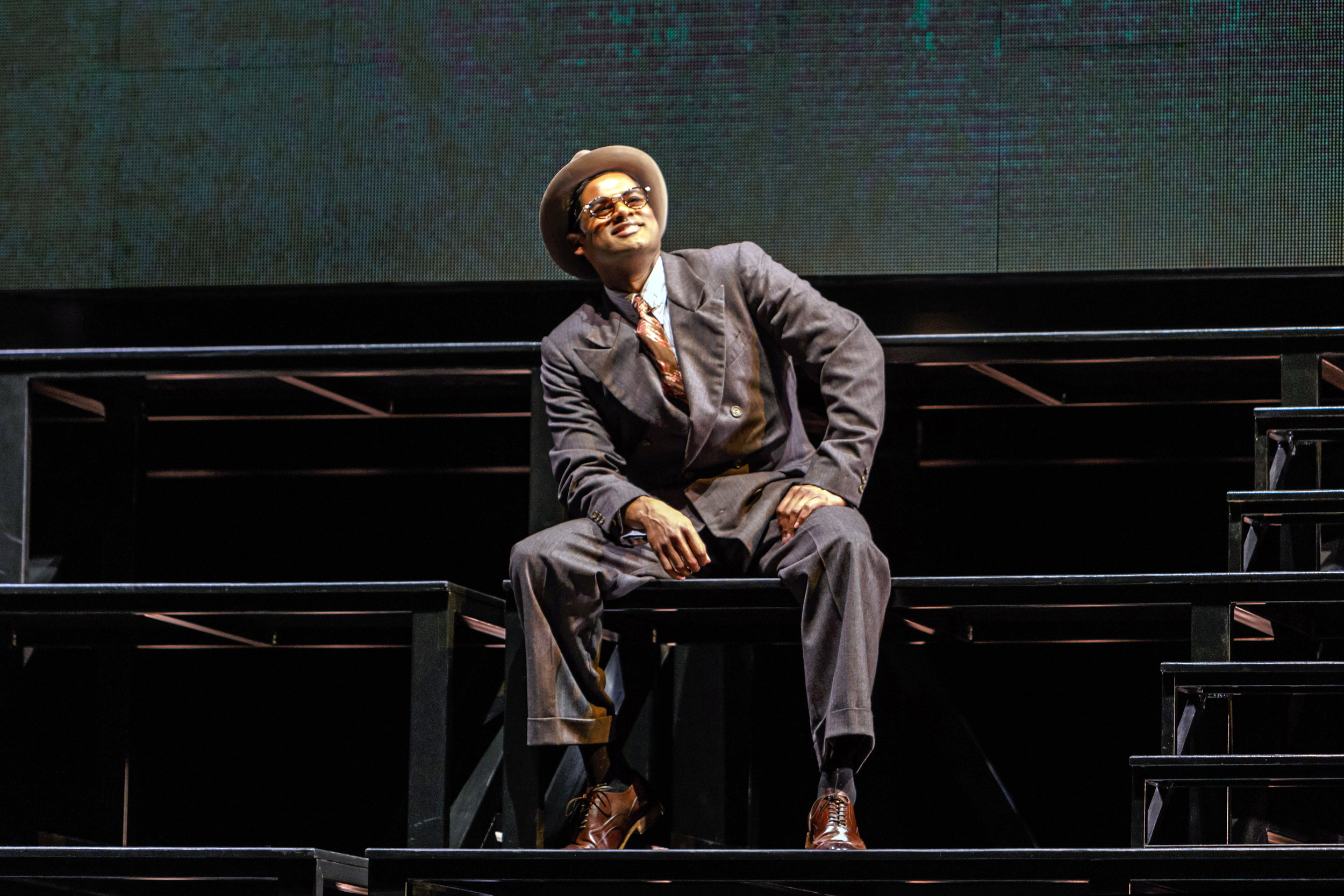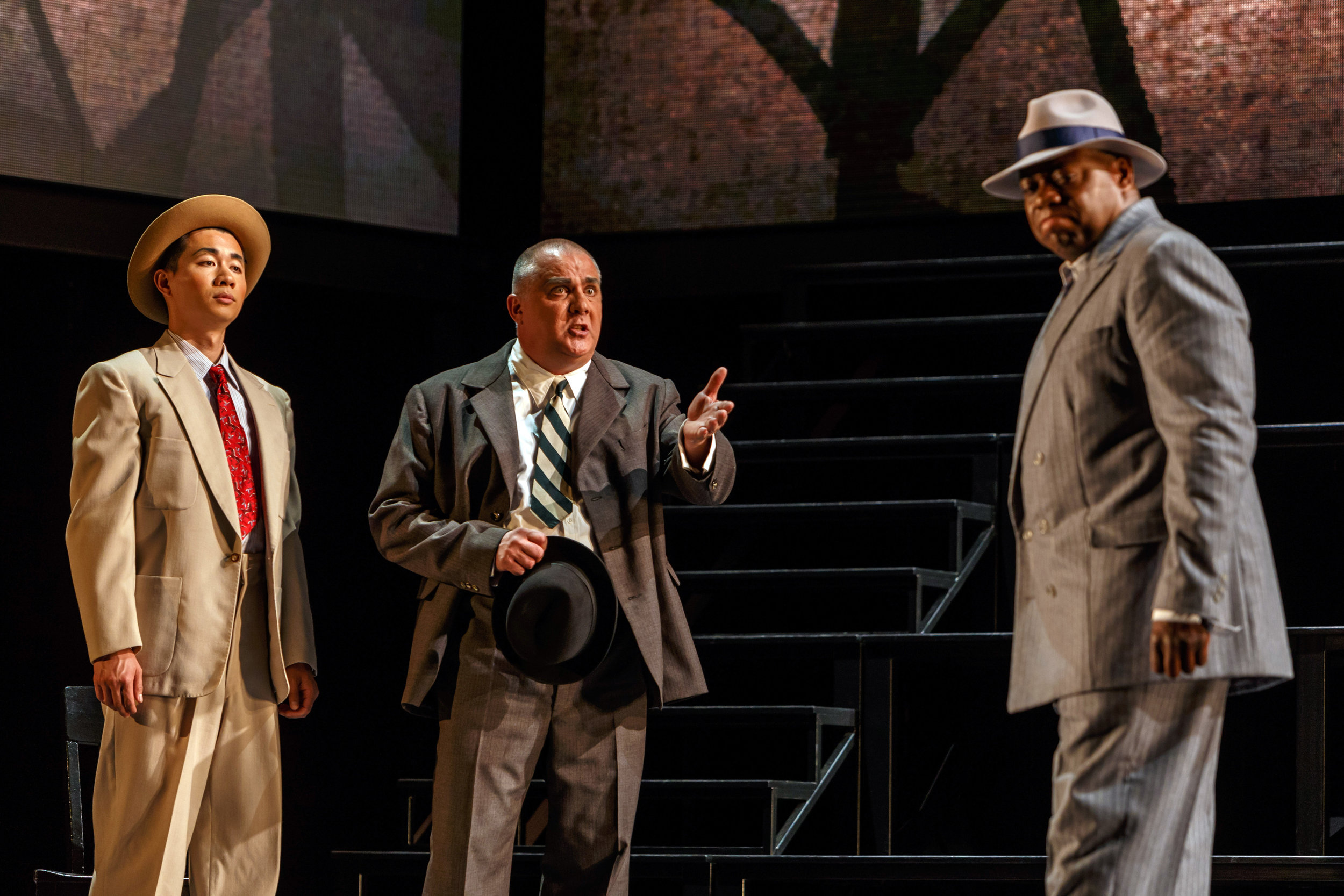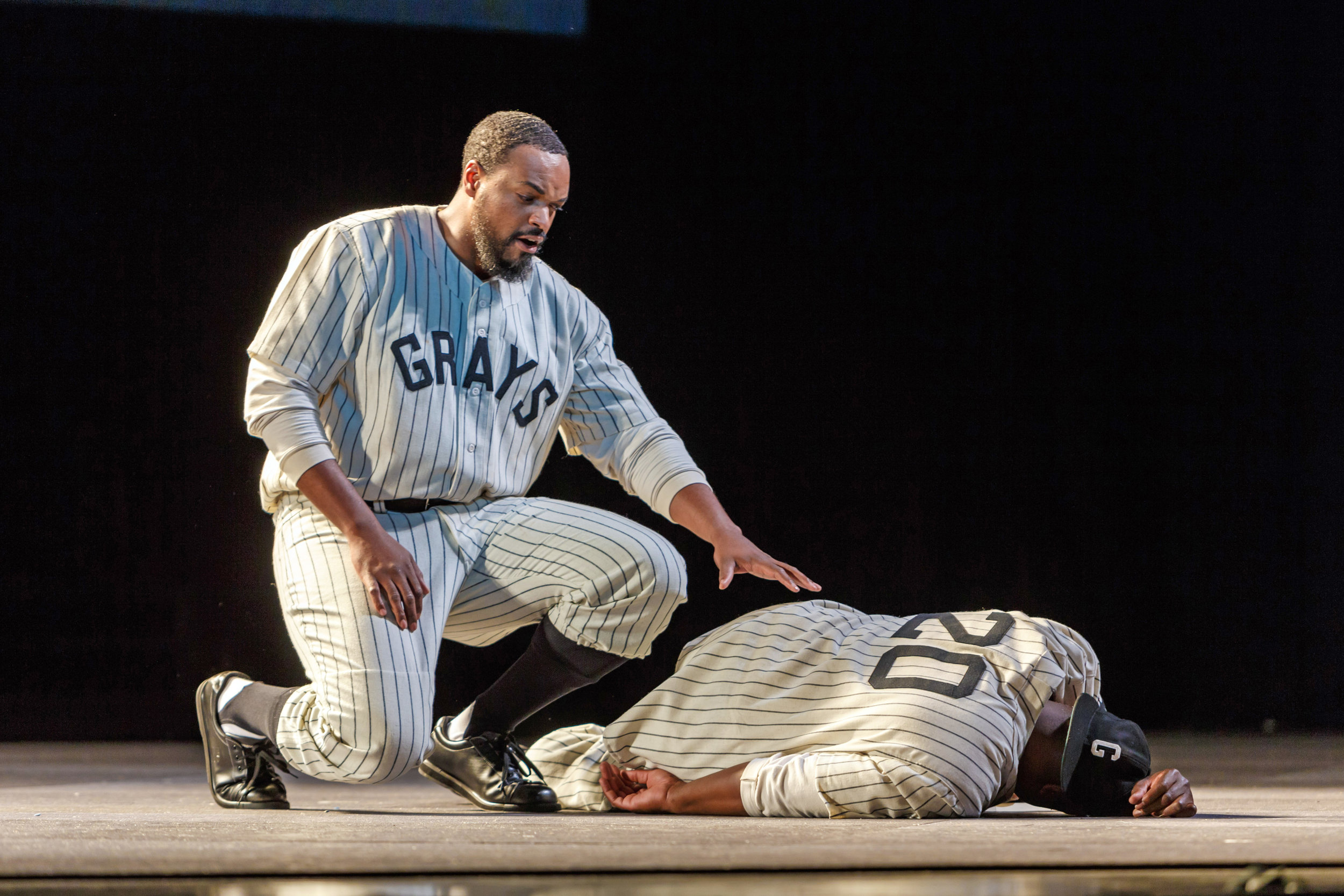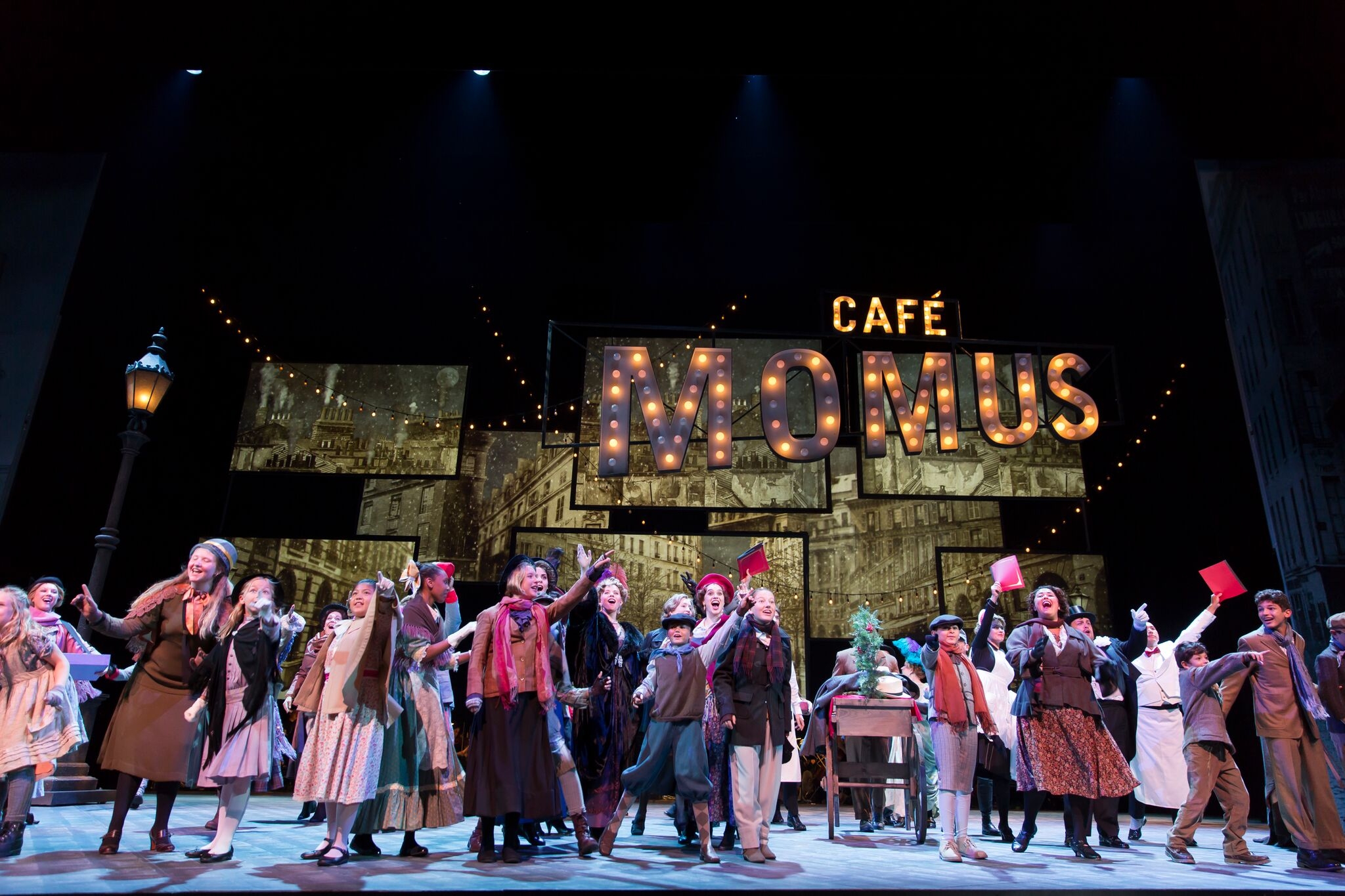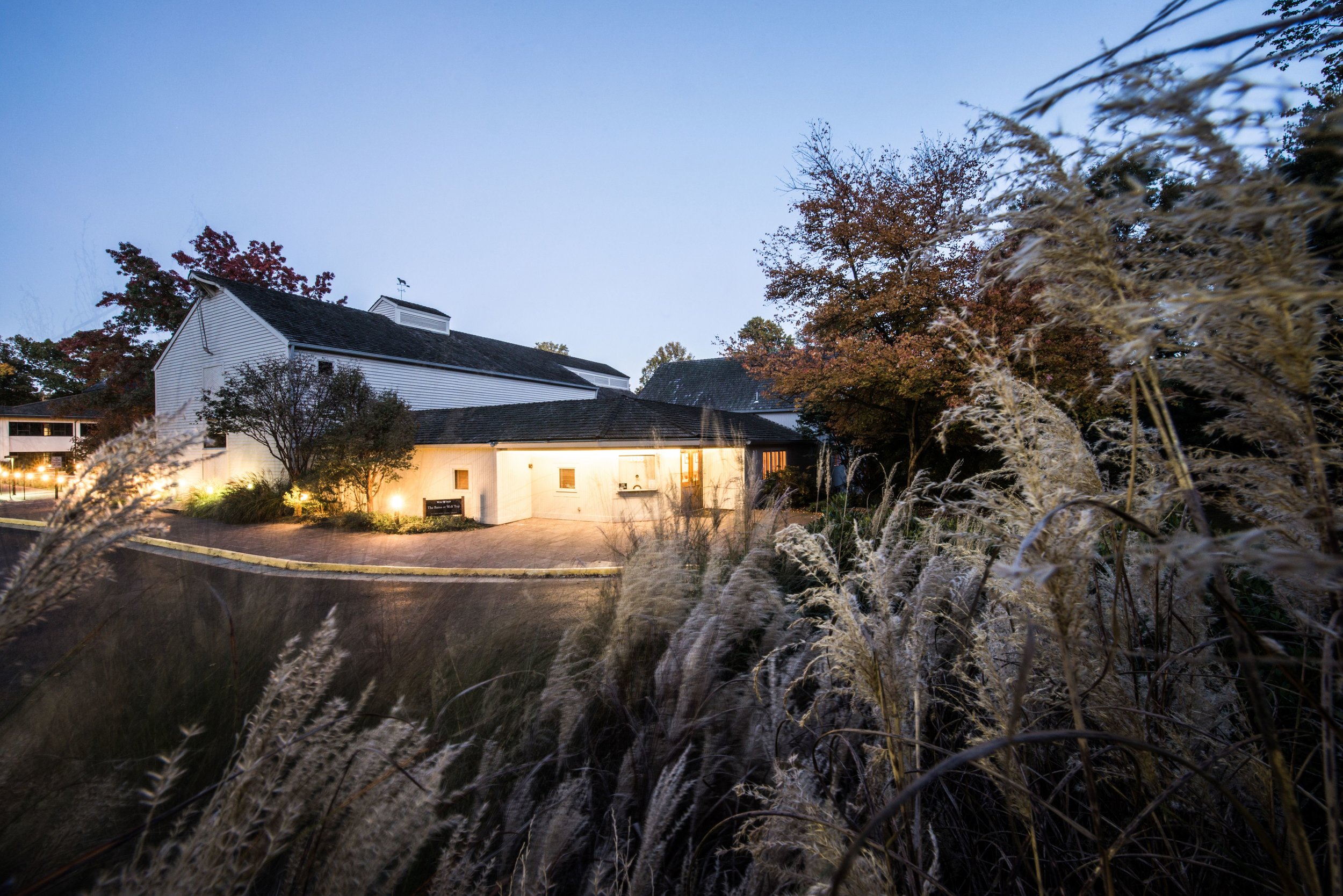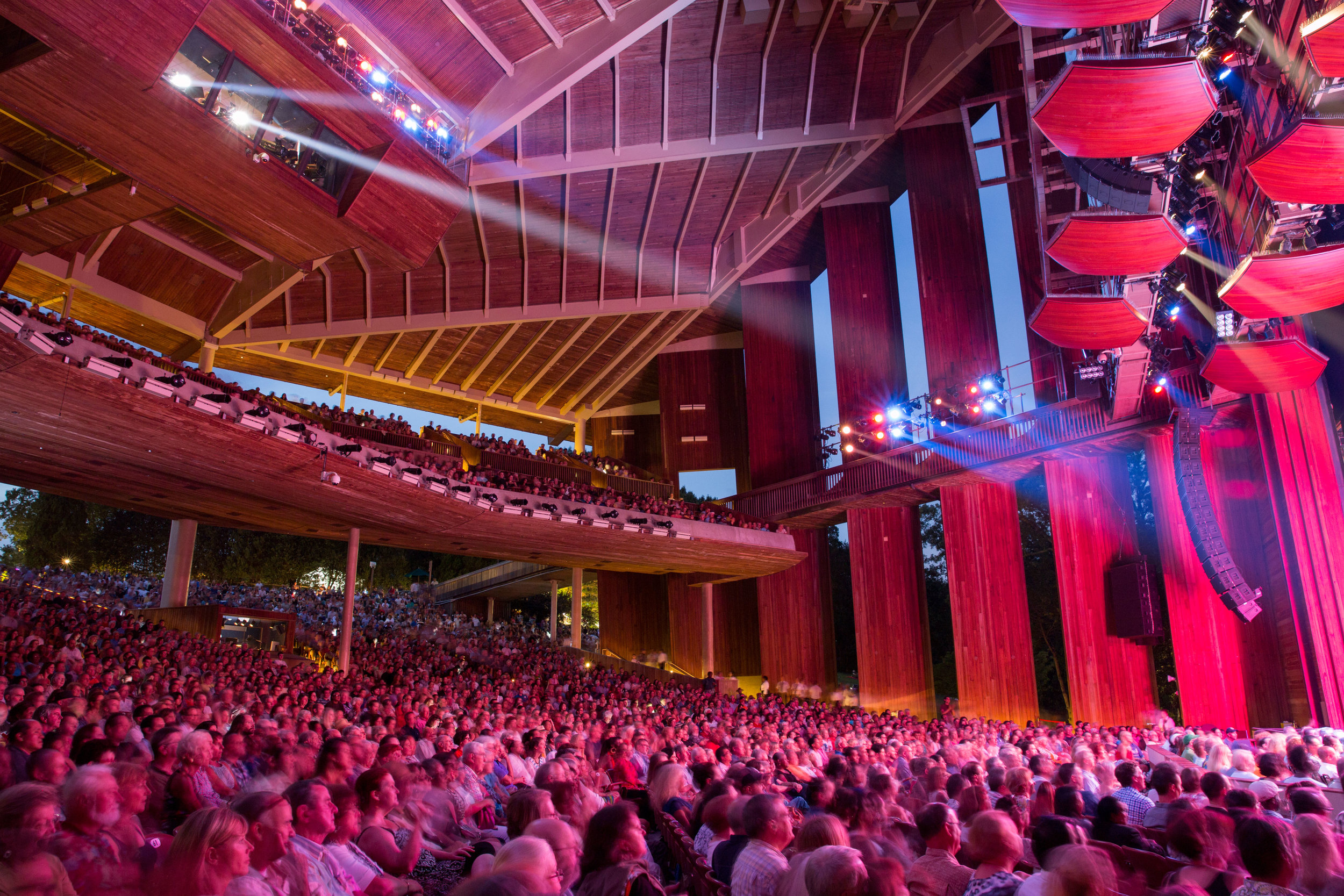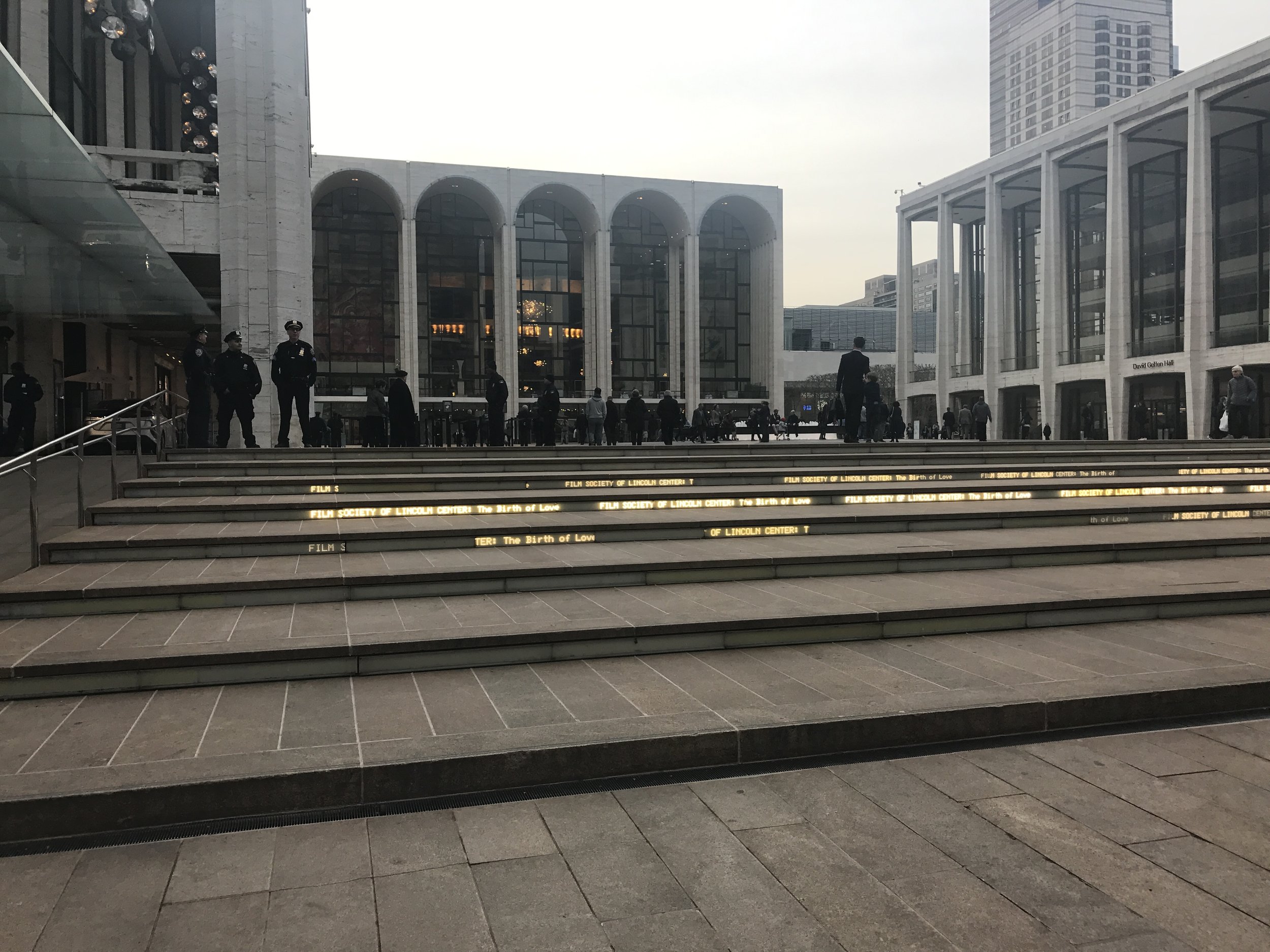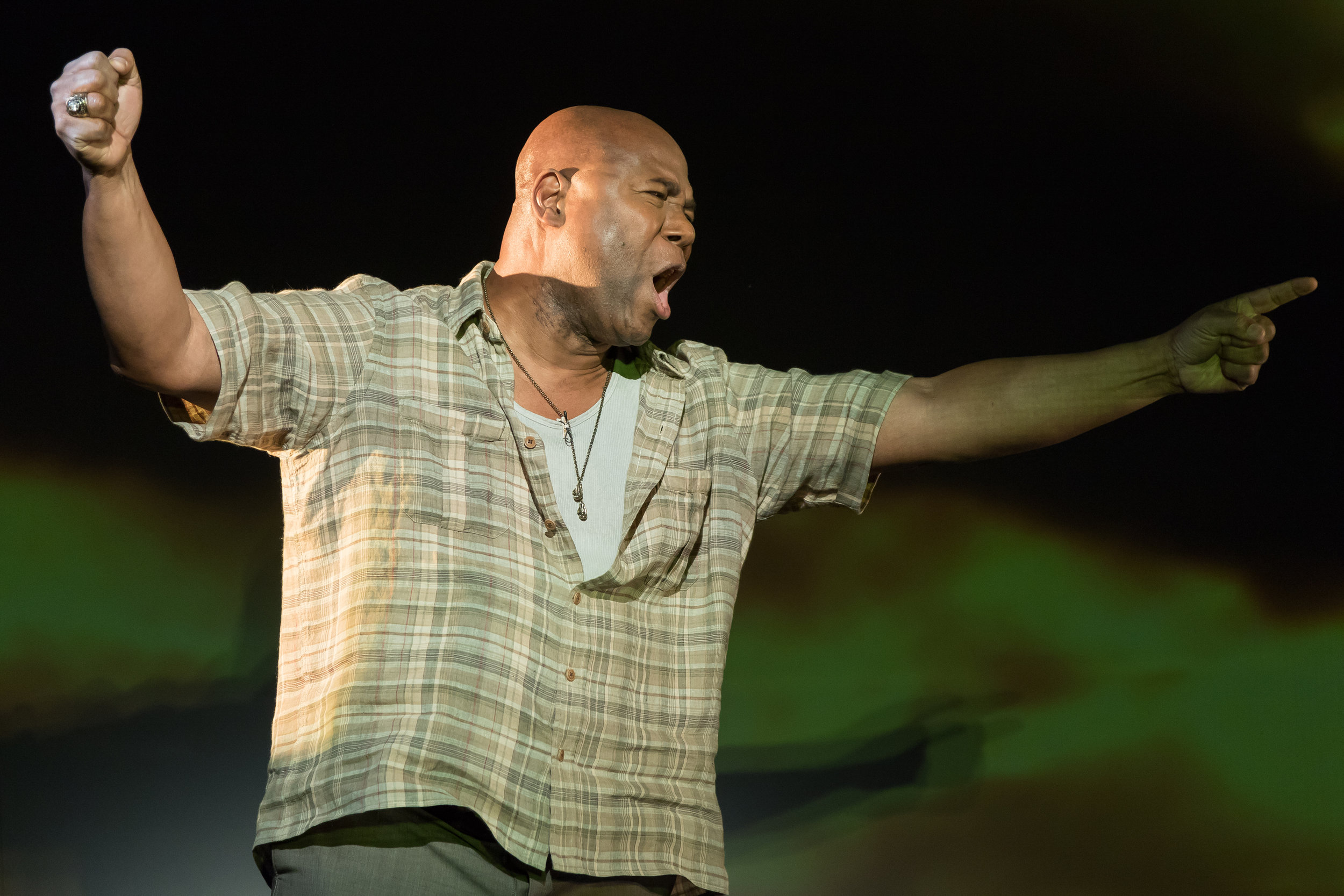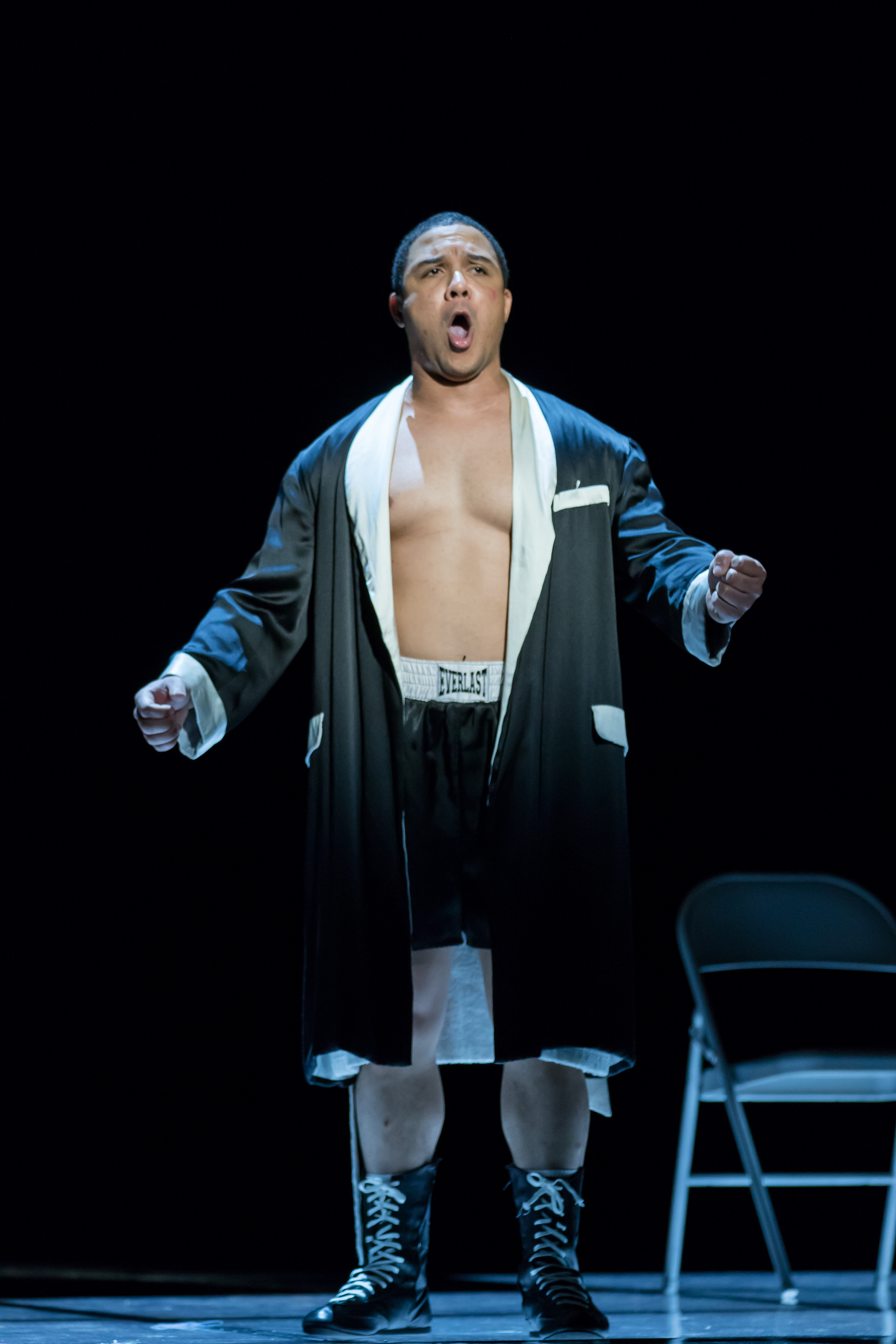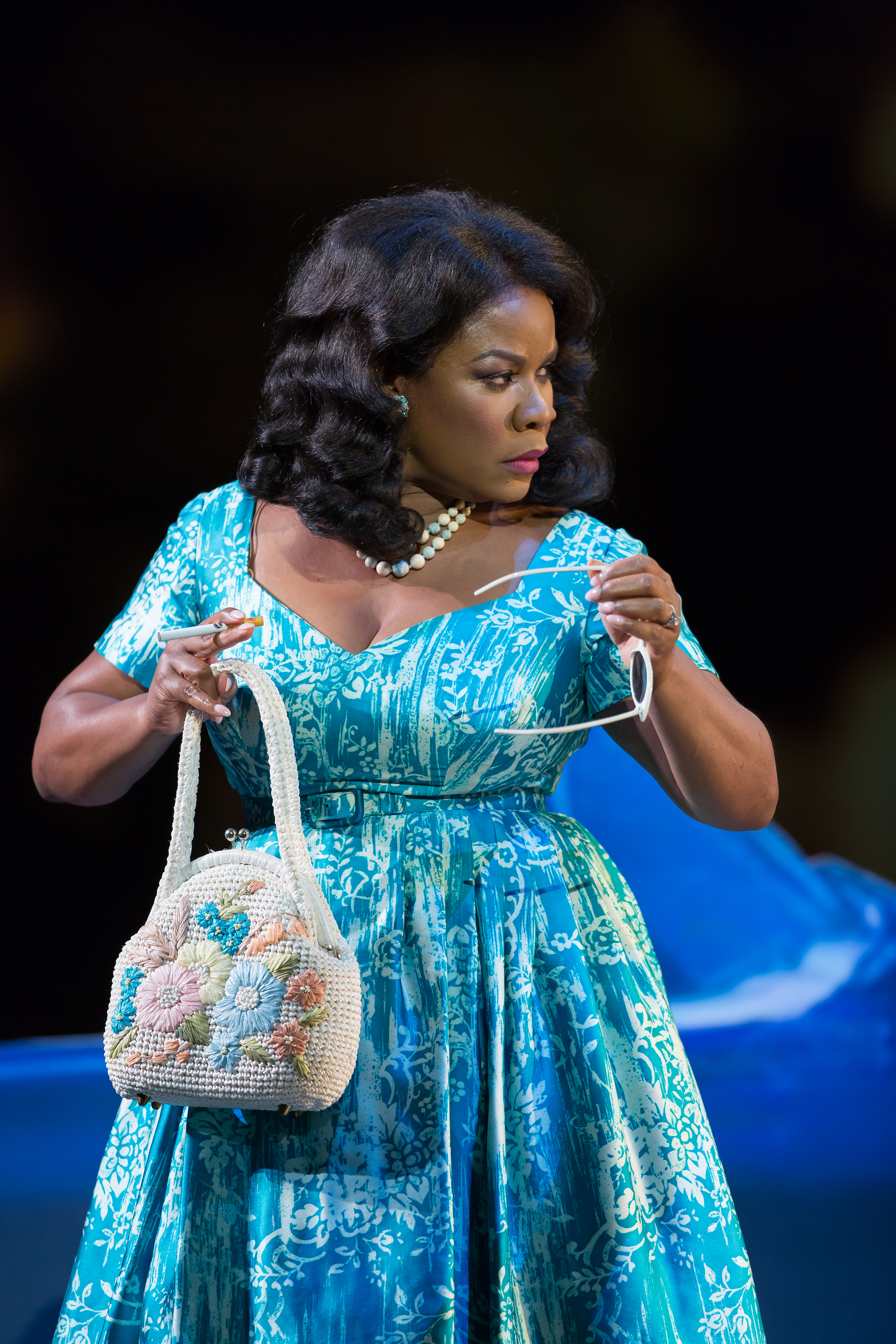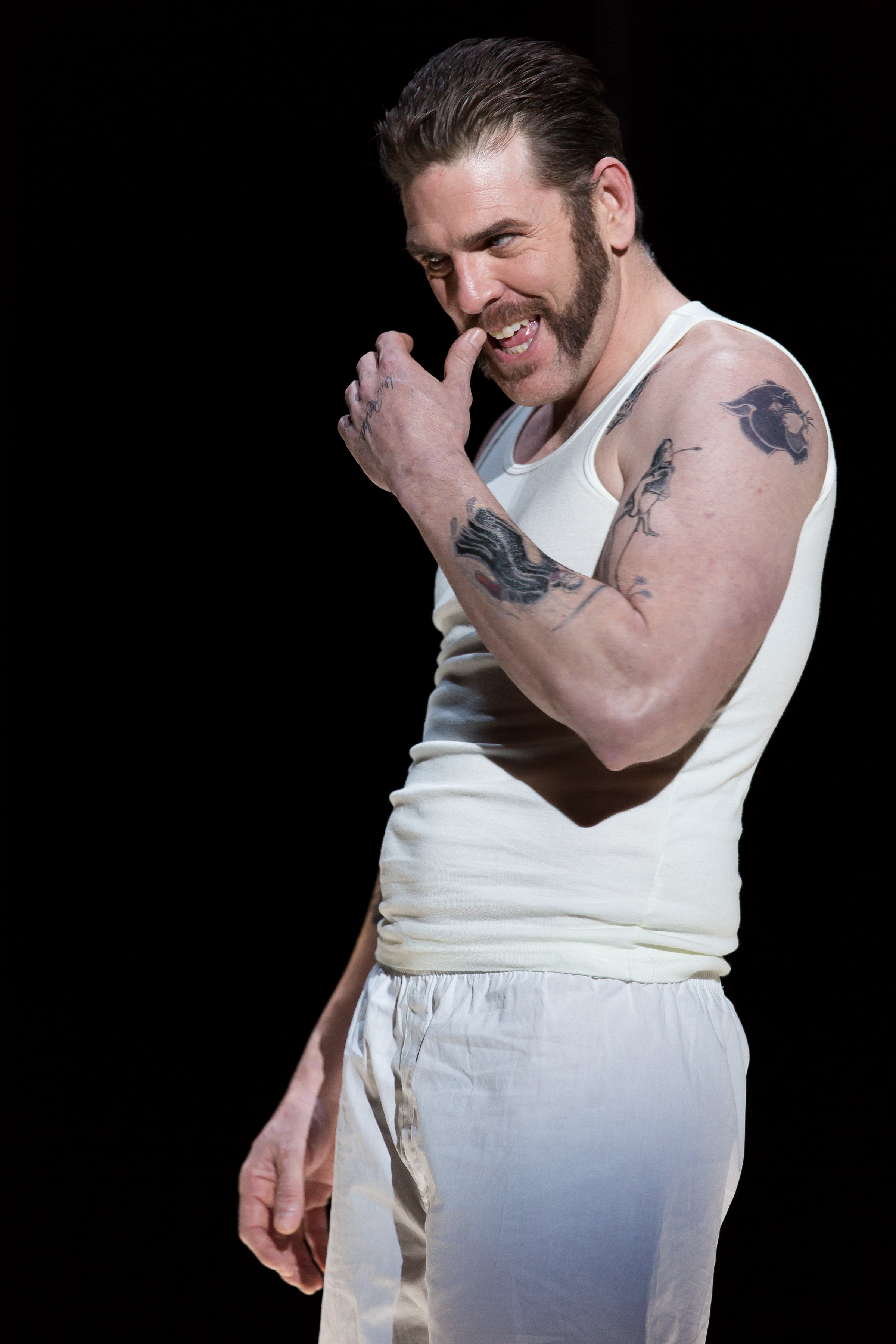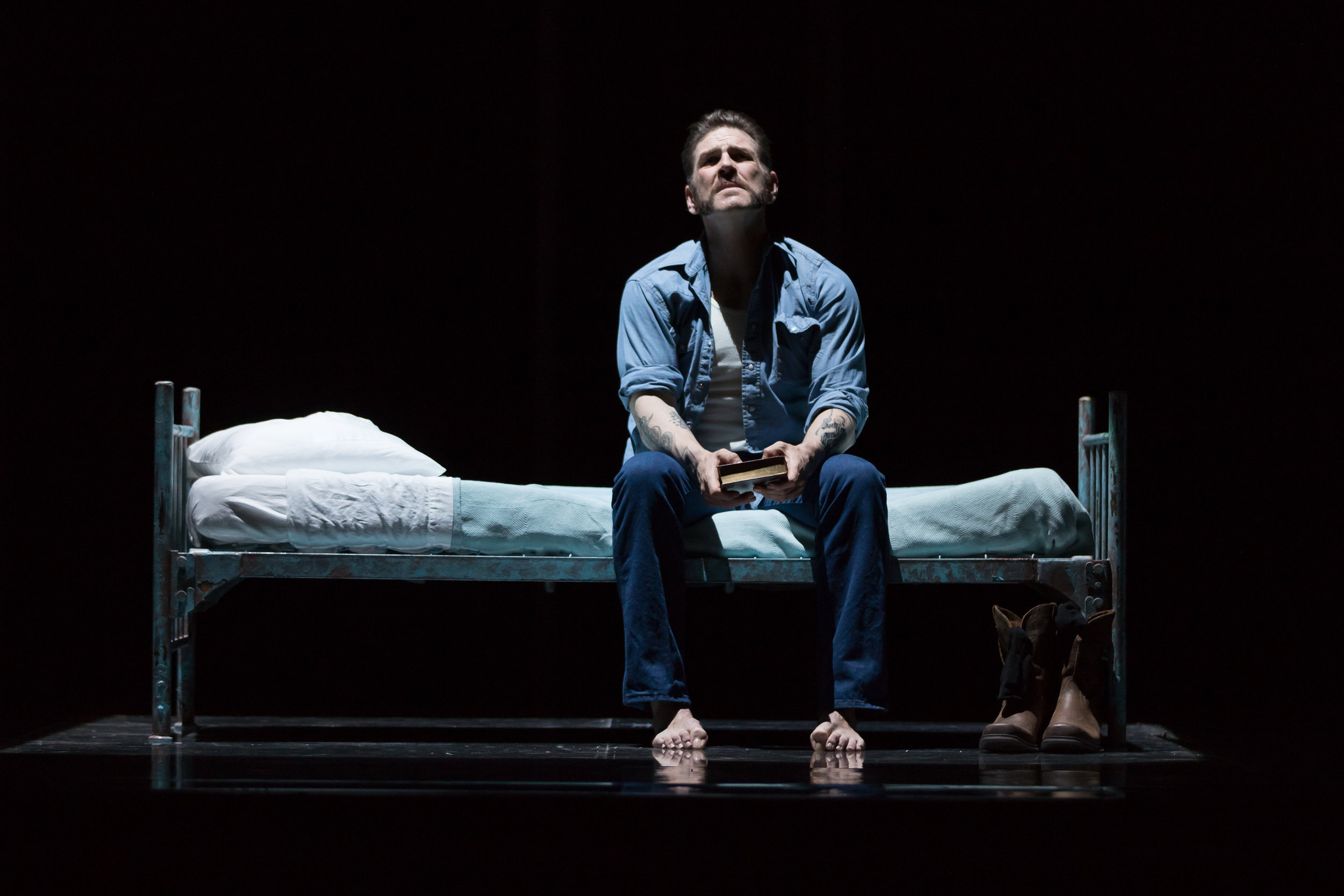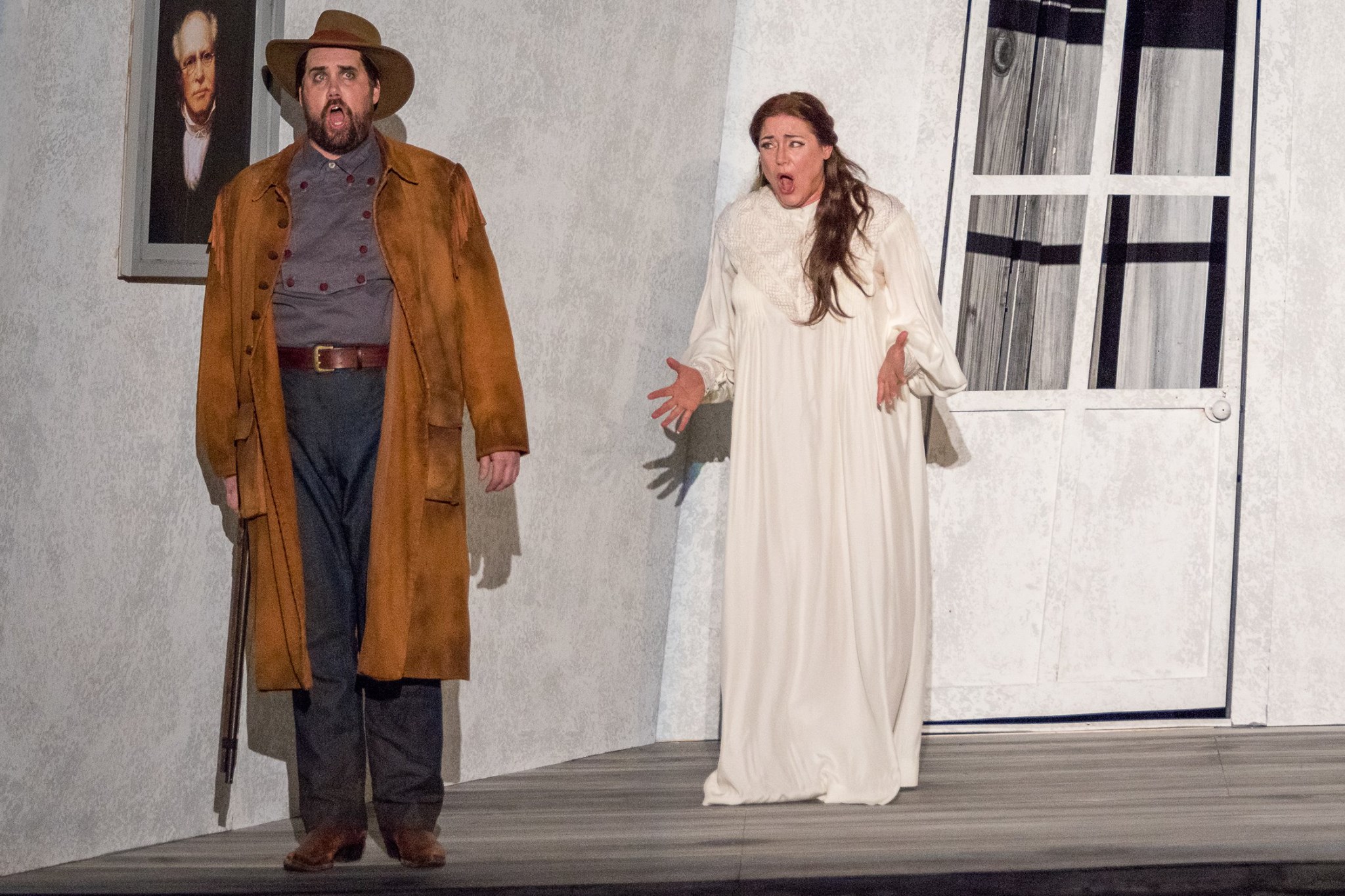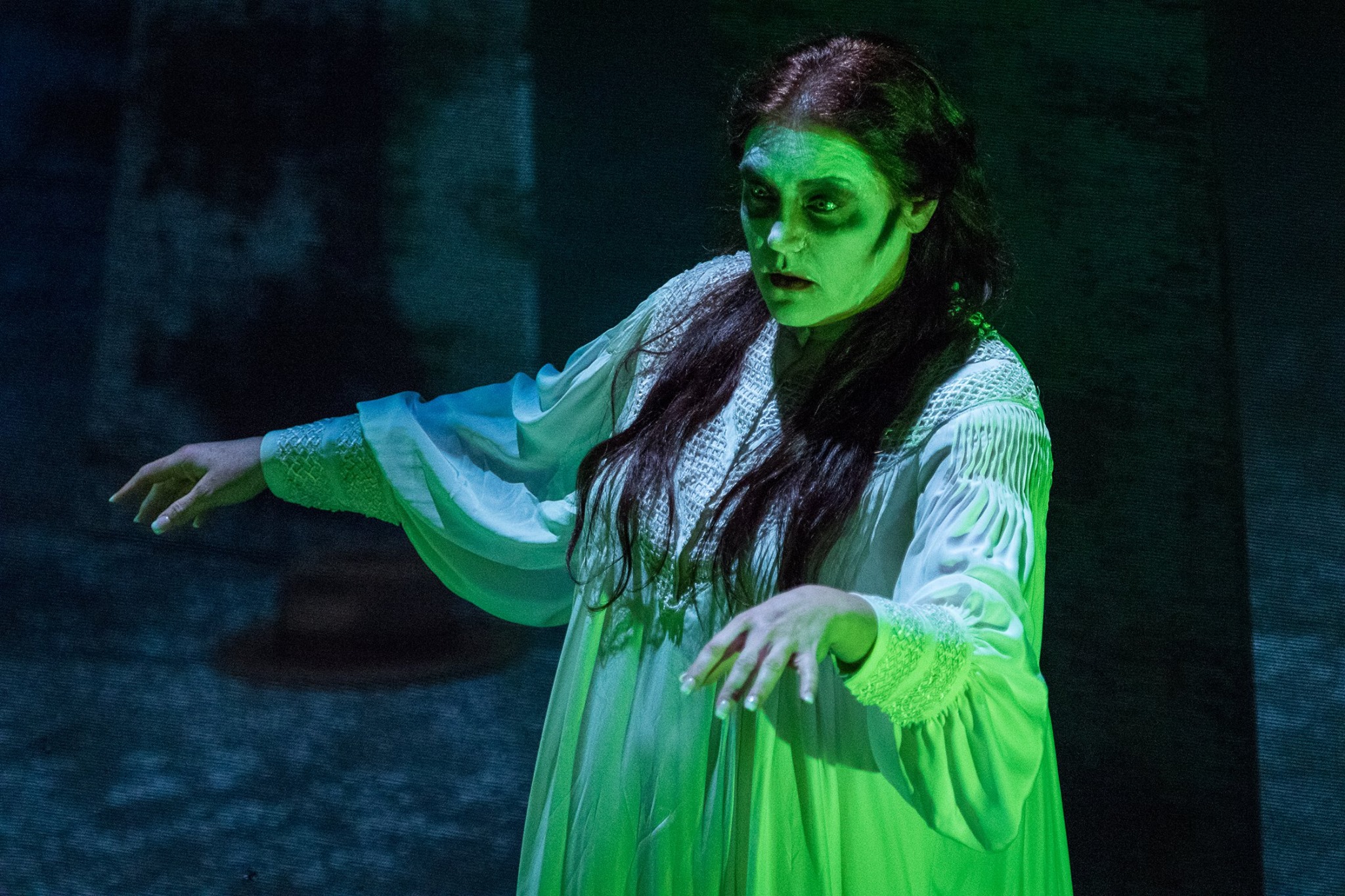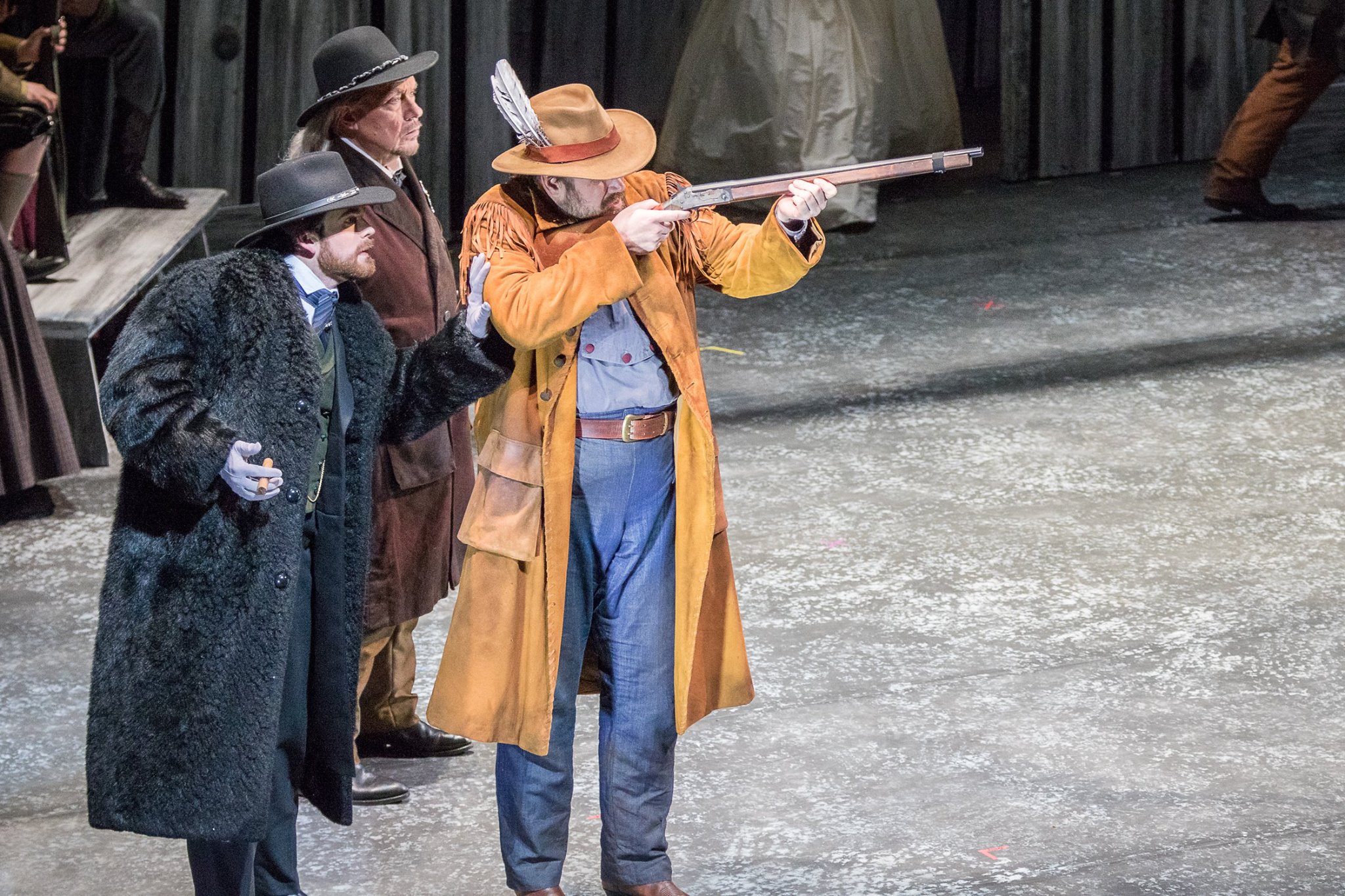In her pre-opera talk, WTO Director Kim Witman stated that in composing The Touchstone, Rossini’s goal was to put on a good show. Well, WTO has taken this opera and put on a good show. The mad cap comical action of this opera was so fast paced it reminded me of the Marx brothers’ films, including one called “A Night at the Opera”. In fact, it causes me to state up front that my personal preference would have been to slow down the comedic touches a bit and scale it back to let the love story be more at the forefront, given the marvelous singing of The Touchstone’s love triangle, but maybe I am trying to rewrite the plot. And I doubt my fellow audience members would have been willing to part with a comedy that evoked such out-loud laughter. As with all of Wolf Trap Opera’s productions, the main attraction is the fresh, yet already trained voices of and the infectious enthusiasm of the young singers who come to WTO each summer to practice their craft; Friday night was no exception. As I reported in my blog post on the 2017 WTO season and oft have repeated, Wolf Trap Opera makes opera fun!
Rotating columns holding the members of The Touchstone's love triangle: Zoie Reams as Clarice; Richard Ollarsaba as Count Asdrubale; and Alasdair Kent as Giocondo. Photo by Scott Suchman and courtesy of Wolf Trap Opera.
The Touchstone begins with some clever staging as rotating columns appear with wall paper on one side and period paintings on the other side. These are used to enter and exit characters from the action. This and the colorful 19th century costumes representing the social status of the players are the primary staging elements and, with the frequently rapid fire action are sufficient. However, the plays the thing, and I must admit to a personal difficulty in following the plot: I have a tendency to sometimes still be taking in an aspect of the production, such as how wonderful the previous aria was or considering what someone’s motives might be, while the plot moves on; I come back to the moment and realize I’ve missed something. As I said, the action for The Touchstone moves fast; so, to get all the jokes you must pay close attention. Most of the audience did and laughter erupted frequently.
Conductor Antony Walker and his thirty-piece ensemble brought Rossini’s music to life. Somehow that wonderful sound manages to project out of the tiny box that is The Barns orchestra pit. Although Rossini wrote this opera when he was only twenty years old, it is spot on Rossini. The ensemble arias are delightful and the Wolf Trap Opera chorus is excellent. You will enjoy the music.
The story of The Touchstone (La Pietra del Paragone; composer Giachino Rossini and librettist Luigi Romanelli) revolves around a rich Count’s scheme to determine who his real friends are and to test his true love by feigning to have lost his fortune. A touchstone of old was a type of rock against which metals such as gold were struck to aid in their determining the identity of the precious metals. In her program comments, director E. Loren Meeker quotes an Italian proverb that says “Men use a touchstone to test gold, but gold is the touchstone to test men.”
Left photo - Richard Ollarsby as Count Asdrubale and Zoie Reams as Clarice. Right photo: Alasdair Kent as Giocondo and Zoie Reams as Clarice. Photo by Scott Suchman and courtesy of Wolf Trap Opera.
The center of the opera is the love triangle: Count Astrubale (Richard Ollarsaba) loves Clarice (Zoie Reams); the Count’s true friend Giacondo (Alasdair Kent) is also in love with Clarice. Clarice loves, well…let’s leave a little suspense. Each of these three singers has a beautiful voice and is able to convey the feelings of their characters. Richard Ollarsaba (Astrubale) and Alasdair Kent (Giacomo) are returning Filene Young Artists, who proved their mettle last year. Given the chance to display some tender moments in this year’s selection, Ollarsaba’s rich bass-baritone shone the entire evening. Last year I thought he was talented; this year I think he has star quality. It was obvious last year that Kent’s high tenor had star quality and his aria in act 2 of Touchstone was a show stopper. Zoie Reams in her first season with WTO was the surprise. Ms. Witman’s decision to give this contralto/mezzo soprano the lead was fully redeemed by her performance. I liked the sound of her voice from the beginning and by the end of the evening the richness of her voice and her ability convey emotion with her singing made me a fan.
Left photo - Alasdair Kent as Giocondo, Richard Ollarsaba as Count Asdrubale. Right photo - Shea Owens as Pacuvio and Summer Hassan as Donna Fulvia. Photos by Scott Suchman and courtesy of Wolf Trap Opera.
In large measure, the plot is simply a vehicle for Rossini and Romanelli to have fun with some character stereotypes, all with designs on the Count’s riches and their love interests. The comedy rests on the shoulders of capable supporting players: returnee Shea Owens as Pacuvio, a hack poet; Anthony Robin Schneider as Fabrizio, the Count’s servant; Megan Mikailovna Samarin as Baroness Asplasia who has designs on the Count; Summer Hassan, also a returnee, as Donna Fulvia who also has designs on the Count; Kihun Yoon as Macrobio, the corrupt newspaper critic. Mr. Schneider's mugging and deadpan humor as a servant brought laughs. Shea Owens showed his comedy chops in last year’s L’Opera Seria and delivers again in a stand out performance, sometimes a little too over the top, but clearly loved by the audience. Summer Hassan had a nice aria in act 2 which she sang well; to my ear, she sounded significantly improved over last year and piqued my interest to hear more. Kihun Yoon has a thunderous baritone that he can also use to some really charming, gentler moments; he becomes a major character as the story develops.
A rehearsal cast photo for The Touchstone; not previously shown, far left, is Megan Mikailovna Samarin as Baroness Asplasia. Photo by Scott Suchman and courtesy of Wolf Trap Opera.
So, if you can get a ticket at this point, go see The Touchstone, maybe get your favorite beverage in hand, and sit back to have a fun, memorable summer evening.
The Fan Experience: Wolf Trap’s The Barns has its advantages: air conditioning (not so at the Filene Center); free parking, easy in and out; all seats close to the stage; beverages, including alcoholic beverages, and lite dinner fare available; drinks, but not food can go with you to your seat and some seats have cupholders; and excellent acoustics. It has a few disadvantages: first some seats on the floor level do not have visibility for the supertitles; part of the structure of the balcony is two 5x5 inch support beams that run from the balcony bannister to the ceiling and are positioned at the aisles adjacent to seats AA101 and AA112 in the front row. Depending on where you sit, you could have restricted view; generally, this will be listed online, but something to consider when you purchase your tickets if restricted view is an issue for you. One other note on seats and this may never happen to you: If you think there is a problem with your seat, bring this up with the usher; management may be able to re-seat you, and if there are no other suitable seats, your case will be improved for seeking a refund or some compensation. On the balance, I love attending opera at The Barns, especially the intimacy of the audience and singers so close together.
Seating is limited but a few tickets remain for the performances on June 28 and July 1.



